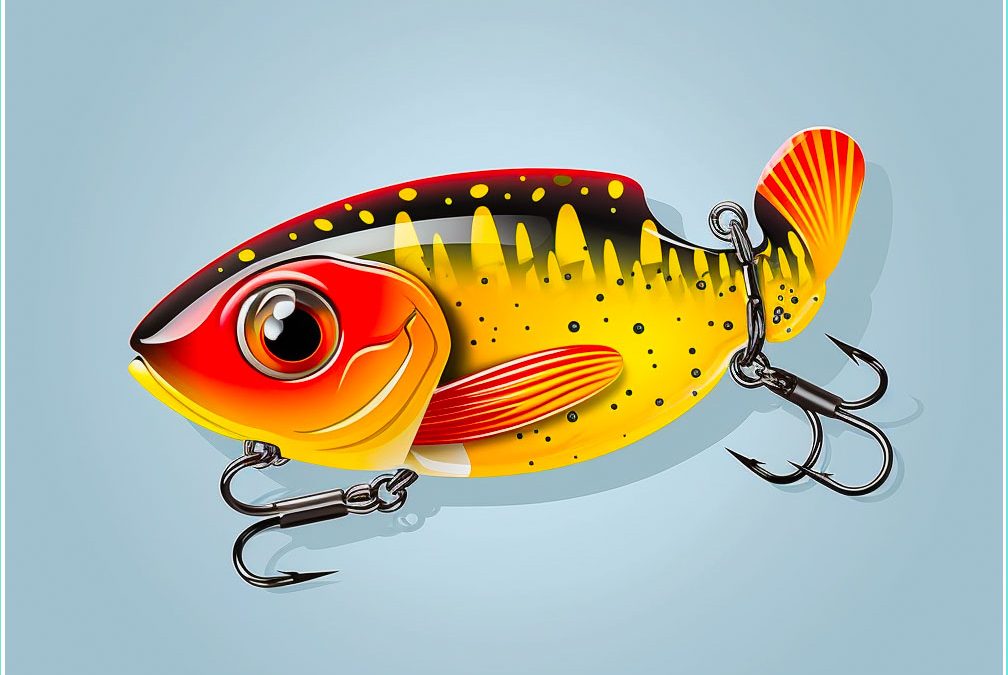Introduction
This article is going to look at fishing lipless crankbaits for bass. Fishing can be a rewarding and relaxing pastime, but let’s face it, catching fish is the main goal. Bass fishing, in particular, can be a challenge. You need to find where the fish are hiding, and then convince them to bite. And while there is no one “right” way to catch bass, there are a few techniques and tools that can make the process easier. One of those tools is the lipless crankbait.
If you’re not familiar with lipless crankbaits, let me provide a brief explanation. They are fishing lures without a lip on the front, which sets them apart from traditional crankbaits. Instead of diving and wobbling like a crankbait, the lipless version sinks or suspends. When retrieved, it has a tight, vibrating shimmy that can be irresistible to bass.
In this article, we’ll take a closer look at lipless crankbaits and explain how they can help you find bass fast. We’ll cover their benefits, how to choose the right lure, techniques for using them, and additional tips and tricks for success.
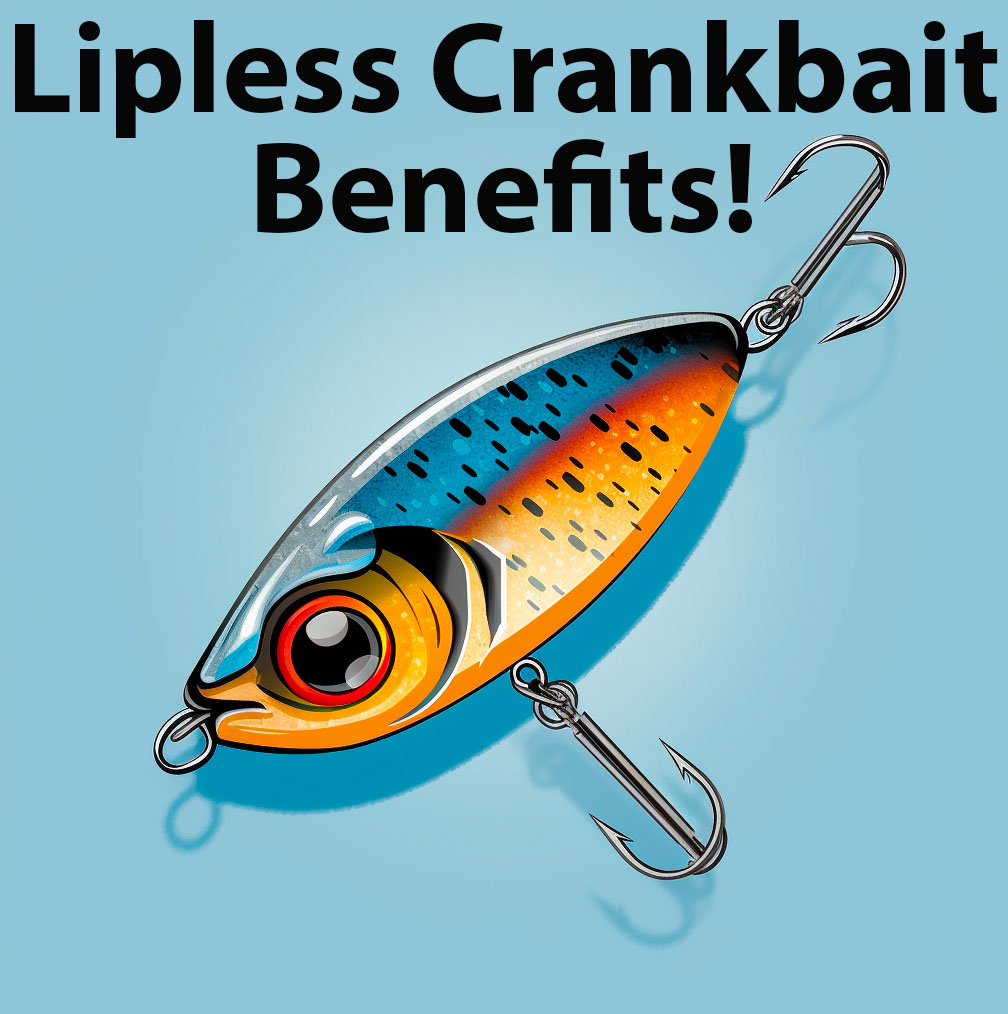
Benefits of Lipless Crankbaits
Versatility
One of the main benefits of lipless crankbaits is their versatility. They can be used in a variety of situations and conditions. You can fish them deep or shallow, in clear or murky water, and at any time of year. They are effective for fishing from the bank or from a boat.
Usage in Different Seasons
Speaking of time of year, lipless crankbaits are a great bait for all seasons. In the spring, bass are in shallow water looking for a meal, and a lipless crankbait can mimic the look and movement of a baitfish that’s trying to escape. In the summer, when water temperatures rise, you’ll find bass in deeper water. A lipless crankbait can be retrieved at different depths to target fish that are holding at different levels in the water column. In the fall, when the water cools off, baitfish move into shallower water again, and bass follow them. A lipless crankbait can help you imitate the baitfish and catch the bass that are feeding on them. In the winter, when the water is cold, fish slow down, and you may need to present the bait differently. A slow, steady retrieve with a lipless crankbait can work wonders when the fish aren’t very active.
Triggering Reaction Strikes
Another great benefit of lipless crankbaits is their ability to trigger reaction strikes. Bass are predators, and they will often strike a lure out of instinct or aggression rather than because they’re hungry. Lipless crankbaits have a tight, vibrating shimmy that can provoke a bass into striking, even if they aren’t particularly hungry.
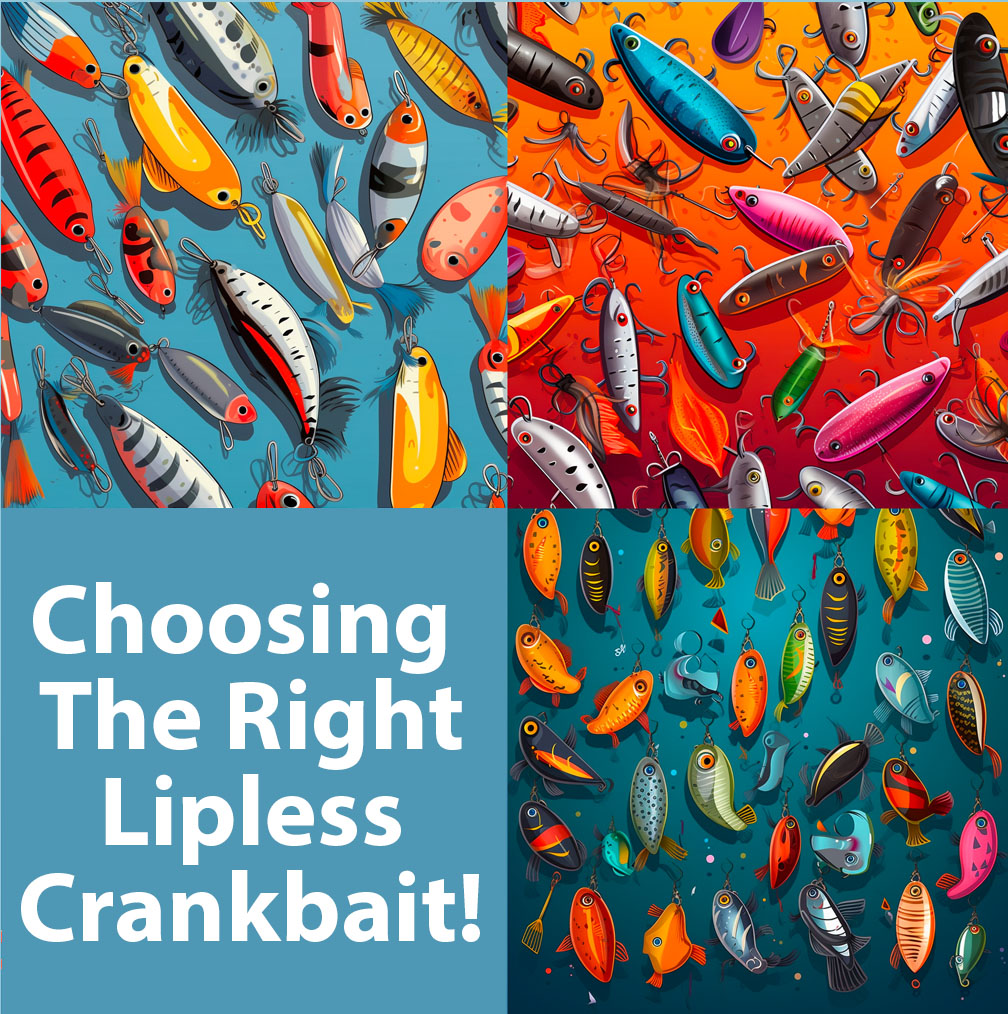
Choosing the Right Lipless Crankbait
Now that you’re sold on the benefits of lipless crankbaits, let’s talk about how to choose the right one. There are a few factors to consider:
Size
Lipless crankbaits come in a range of sizes, from 1/4 ounce to 1 ounce or more. The size you choose will depend on the size of the baitfish in the area you’re fishing. If the baitfish are small, go for a smaller lure. If the baitfish are larger, choose a larger lure.
Color
Color is another consideration. The general rule is to choose a color that mimics the local baitfish. If you’re not sure what color the baitfish are in the area where you’re fishing, try a natural color like silver or gold. If the water is murky, go for a brighter color to help the lure stand out.
The color of a lipless crank bait can play an important role in triggering strikes from fish. Different colors mimic different types of prey, so it is important to choose a color that matches the natural prey in the area where you are fishing. For example, if the water you are fishing in has a lot of shad, a silver or white-colored lipless crank bait can be effective. If the water is murky or stained, a brighter colored bait may stand out better and be more visible to fish.
Another factor to consider is the time of day. As the lighting changes throughout the day, the effectiveness of different colors can also change. As a general rule, brighter colors tend to work better in low-light conditions such as early morning or late evening. In bright sunlight, more natural or muted colors may be more effective.
Ultimately, the best color for a lipless crank bait depends on the specific conditions of your fishing location and the preferences of the fish in that area. Experimenting with different colors and observing how the fish react can help you determine the most effective colors for your fishing situation.
Hook Size and Type
Another important consideration is the hook size and type. For smaller lures, you’ll want a smaller hook. For larger lures, you’ll want a larger hook. The most common hook type for lipless crankbaits is a treble hook. Treble hooks have three points, which increases your chances of hooking a fish. However, they can also be more difficult to remove from a fish’s mouth, which can cause injury to the fish. If you’re concerned about that, you can switch to a single hook or a weedless hook.
How to Modify lipless crank baits for better hookups
Best Gear For Fishing Lipless Crankbaits
Best Gear Ratio Reel
Sure, here are some additional points to consider when choosing the best gear ratio for a lipless crankbait:
- A high gear ratio means that the spool will turn faster and retrieve more line per turn of the handle. This can be advantageous when fishing in deep or open water where you need to cover a lot of ground quickly.
- A fast gear ratio also enables you to keep your bait moving at a constant speed, which can be important when trying to draw strikes from predatory fish like bass. Lipless crankbaits are designed to be retrieved at a steady pace, so having the right gear ratio can help you achieve that.
- In contrast, a slower gear ratio (e.g. 5:1) might be more suitable for baits that require a slower and more deliberate retrieve. This could include finesse baits or lures that you want to hover in front of fish for an extended period of time.
- Ultimately, the ideal gear ratio for a lipless crankbait will depend on your personal preference and fishing style. You may need to experiment with different gear ratios to determine which one works best for you and the conditions you’re fishing in.
Best Rod For Lipless Crankbaits
When choosing a rod for a lipless crankbait, consider these factors:
- Length: A longer rod will help you make long casts, detect bites, and keep fish hooked. For lipless crankbaits, a rod between 6’6” to 7’6” is ideal.
- Power: Lipless crankbaits are usually fished in open water and require a rod with medium power. This allows for a balanced mix of sensitivity and strength to detect and set the hook on a bite, but also handle a fish once it’s hooked.
- Action: The action of the rod should be moderate to fast. This allows for quick reaction time when setting the hook and provides the needed backbone to fight bigger fish.
- Blank Material: Graphite or composite materials are recommended for lipless crankbaits. These are both strong, light, and sensitive, which allows for detecting and feeling action of the bait in the water.
- Handle: A comfortable handle that provides a good grip is essential to avoid fatigue during a long day of fishing. Consider the size of your hands and the type of material used in the handle.
Ultimately, the right rod for you will depend on your personal preferences and fishing style. Consider trying different options before making a final decision.
Best Line For Lipless Crankbaits
Choosing the right line for a lipless crankbait depends on several factors such as the depth you plan to fish, the type of cover, and the clarity of the water.
For shallow water fishing, a braided line with a low diameter like 10-20 lb test is ideal as it will allow you to make long casts and feel the vibrations from the lure more effectively. Braided line also has low stretch, which makes it easier to set the hook.
If you plan to fish in deeper waters with a lot of cover like weed beds or submerged timber, a fluorocarbon line with a higher test of 20-30 lb can handle the abrasion of these structures without breaking. Fluorocarbon line is also invisible in the water which makes it useful in clear water environments.
If the water is murky or stained, a mono filament line with 10-20 lb test is a better choice as it has high visibility or a colored fishing line that stands out in the water for better visibility.
Overall, the key is to choose a line that meets your specific fishing needs based on the conditions you are fishing in, your hooks, and the lures you are using.
Best Knot For Lipless Crankbaits
The best knot for a lipless crank bait would be a Palomar knot as it creates a strong and secure connection between the lure and the fishing line. To tie a Palomar knot, follow these steps:
- Double about six inches of line, and pass it through the eye of the lure.
- Tie an overhand knot with the tag end and the doubled line, but do not pull it tight.
- Pass the lure through the loop formed by the overhand knot.
- Moisten the knot, and pull on the tag end and the standing line to tighten the knot.
- Trim the tag end.
The Palomar knot provides good strength and allows the lipless crank bait to move freely in the water, creating a more natural presentation.
Brand Recommendations
There are a lot of brands of lipless crankbaits out there, and it can be overwhelming to choose one. Here are a few brands that are known for making quality lipless crankbaits:
Strike King Red Eye Shad
Lucky Craft LV500
As an angler, I, like many others, used to believe that LC baits were overpriced and that there were other baits available for a third of the price that worked just as well. However, my perception changed after a recent tournament where my partner used the LV 500 in shad color and outperformed me… Read More
Bill Lewis Rat-L-Trap
Rapala Rippin’ Rap
Spro Aruku Shad
Yo-Zuri Rattl’n Vibe
Water Clarity
Water clarity is an important factor to consider when fishing a lipless crank bait as it affects how visible the bait is to the fish. In clear water, the fish can see the bait more easily and may be more likely to bite it, so using a natural or realistic-looking lure can be effective.
In murky or stained water, using a brightly colored lure can help the fish locate the bait more easily. Additionally, choosing a lure that matches the size and color of the local baitfish can increase your chances of success.
Ultimately, understanding the water clarity and adjusting your strategy accordingly can help you catch more fish when using a lipless crank bait.
Techniques for Using Lipless Crankbaits
Casting and Retrieving
Now that you have the right lipless crankbait, it’s time to learn how to use it. The most common technique is casting and retrieving. Here’s how to do it:
- Cast the lure out and let it sink to the desired depth.
- Start retrieving the lure with a steady, medium-speed retrieve.
- Vary the speed and rhythm of the retrieve. Sometimes a faster retrieve will trigger a strike, and sometimes a slower retrieve will work better.
- When the lure hits a piece of cover, like a weed bed or a rock pile, pause the retrieve and let the lure sink to the bottom. Then, rip the lure off the cover and start the retrieve again. This can mimic the movement of a baitfish that’s darting around cover.
Yo Yo Retrieve
This is one of my favorite retrieves while fishing a lipless crank bait. Simply cast the bait out and let it fall to the bottom. Then gently raise the bait and let it fall on a semi slack line. It’s not a violent ripping the bait up.
Ripping and Pausing
Another technique that can be effective with lipless crankbaits is ripping and pausing. Here’s how to do it:
- Cast the lure out and let it sink to the desired depth.
- Instead of a steady retrieve, quickly jerk the lure up and then let it sink back down. This will cause the lure to wobble and vibrate, which can be irresistible to bass.
- After each rip, let the lure sink back down to the desired depth.
- Repeat the process, varying the speed and rhythm of the rips.
Burning A Lipless Crankbait
A burning lipless crankbait is a technique used in fishing where the angler retrieves the bait as quickly as possible over a short distance, causing the bait to vibrate rapidly in the water. This technique is often used to imitate a fleeing baitfish or to get the attention of predator fish.
To do this, the angler will cast the lipless crankbait out and quickly start retrieving it with a steady, fast reel retrieve. This causes the bait to vibrate rapidly in the water, creating a lot of movement and noise that predator fish can detect from a distance.
It’s important to note that the speed of the retrieve can vary depending on the conditions and the type of fish you are targeting. Experimenting with different speeds and retrieves can help you find the optimal technique for your specific situation.
Rod Angle
In addition to the fast retrieve speed, anglers can also vary the depth of the bait by adjusting the rod tip angle and the speed of their retrieve. A burning lipless crankbait is most effective when fishing in shallow water or when targeting fish that are actively feeding and looking for a quick and easy meal.
One of the key benefits of using this technique is that it can elicit strikes from fish that are otherwise hesitant to bite. The rapid movement of the bait combined with the noise and vibration can trigger a predator’s instinct to strike, even when they are not actively feeding.
To maximize your chances of success when burning a lipless crankbait, it’s important to choose the right bait for the conditions and the fish you are targeting. Pay attention to the color, size, and weight of the bait, as well as the profile and action of the lure.
Overall, burning a lipless crankbait can be an effective and exciting way to catch fish. With practice and experimentation, you can become a master of this technique and increase your chances of landing big fish on your next fishing trip.
Techniques for Different Depths
As I mentioned earlier, one of the benefits of lipless crankbaits is their ability to be fished at different depths. Here are a few techniques for different depths:
- Shallow Water: In shallow water, you can use a steady retrieve or a ripping and pausing technique to mimic the movement of baitfish. You can also try a stop-and-go retrieve, where you retrieve the lure in short bursts and then let it sink for a few seconds before continuing the retrieve.
- Mid-Depth: In mid-depth water, you can use a steady retrieve or a ripping and pausing technique. You can also try a yo-yo retrieve, where you quickly reel the lure up a few feet and then let it sink back down to the desired depth.
- Deep Water: In deep water, you’ll need to let the lure sink to the desired depth before starting the retrieve. You can use a steady retrieve or a ripping and pausing technique. You can also try a slow-rolling retrieve, where you retrieve the lure at a slow, steady pace along the bottom.
Best Places to Fish A Lipless Crankbait
Shallow weed beds
Fishing lipless crankbaits in shallow weed beds can be an extremely effective technique. The lure’s open hook design allows for it to bounce off and through the weeds without snagging, making it an ideal choice in areas with dense underwater vegetation.
When fishing lipless crankbaits in shallow weed beds, it’s important to cast the bait beyond the weed line and retrieve it quickly back towards the boat. The vibration and erratic motion of the lure as it moves through the weeds can attract nearby fish and trigger a reaction bite.
Another tactic to try is “yo-yoing” the bait through the weeds. This involves casting the lure out and letting it sink to the bottom. Then, the angler should reel in the slack and then sharply lift the rod tip, causing the bait to rise up through the weeds. Repeat this process all the way back to the boat.
It’s also important to match the size and color of the lipless crankbait to the surrounding vegetation and the prey fish in the area. For example, if fishing in a weed bed of predominantly green vegetation, a green or chartreuse colored bait with a silver or gold finish will be more effective than a purple or blue lure.
Overall, fishing lipless crankbaits in shallow weed beds can be an exciting and productive way to catch fish. Remember to use a fast, erratic retrieve and experiment with different colors and sizes to find what works best in the given conditions.
Rip-rap shorelines are rocky structures along the bank that provide cover for fish. Lipless crankbaits can be cast parallel to the bank and retrieved with a steady retrieve. The vibration from the lure can make fish come out of hiding and attack the bait.
Drop-offs:
When fishing lipless crankbaits on drop-offs, the goal is to locate fish that are holding on the edge of the drop-off looking for prey. By fishing a lipless crankbait on the edge of the drop-off, you can effectively cover the area and draw fish out of hiding.
Here are some tips for fishing lipless crankbaits on drop-offs:
- Use a graph: Use a fish finder or a depth chart to locate the drop-off and determine the depth of the fish. Fish will typically be found at the bottom of the drop-off, so you want to make sure you are fishing in the right area.
- Choose the right bait: Lipless crankbaits come in different sizes and colors. Choose a bait that matches the size and color of the forage in the area. For example, if there are shad in the area, choose a bait that has a silver or white color.
- Use the right technique: Cast the bait out and let it sink to the bottom. Once it reaches the bottom, start reeling the bait in with a slow and steady retrieve. Vary the retrieve until you find a speed that works best.
- Keep in contact with the bottom: When fishing drop-offs, it’s important to keep the bait in contact with the bottom. This can be achieved by using a slow and steady retrieve and by choosing the right weight of the bait.
- Watch for bites: When fishing drop-offs, you may not feel the fish bite right away. Watch for any changes in tension on the line or any movement of the bait as these can be signs of a fish attacking the bait.
By following these tips, you can effectively fish lipless crankbaits on drop-offs and catch more fish.
Grass flats:
Fishing lipless crankbaits on grass flats can be an effective technique for catching various fish species, including bass, pickerel, pike, and walleye. Here are a few tips for successfully fishing lipless crankbaits on grass flats:
- Choose the right lure: Lipless crankbaits come in various sizes and colors. Choose a lure that matches the size of the baitfish in the area. A good rule of thumb is to match the color to the color of the forage in the water (i.e., natural colors like green or brown for grassy areas).
- Use a slow to medium retrieve: When fishing on the grass flat, try to keep the lure just above the grass, using a slow to medium retrieve. A steady retrieve can mimic a wounded baitfish, which can trigger a reaction strike from nearby fish.
- Vary your retrieve: Experiment with different retrieval speeds, pausing, or jerking your rod to trigger a fish’s interest. Sometimes the fish want a fast-moving bait, while other times they want a more subtle presentation.
- Target pockets: Look for small openings or pockets in the grass where the fish may be hiding. These areas can be more productive than open areas, especially if they are near deeper water.
- Stay alert for strikes: Lipless crankbaits will often get hit on the fall or as you begin to retrieve, so it’s important to stay alert and ready to set the hook.
Overall, fishing lipless crankbaits on grass flats can be a fun and productive way to catch fish. With a little patience and some experimentation, you can hone in on the right technique to catch your target species.
Open water
When fishing lipless crankbaits in open water, it is important to locate fish first. Using electronics like fish finders can help you search for schools of fish or structure in the water that may be holding fish. Look for areas where fish can hide or feed like a drop-off, a hump, or a submerged structure.
Once you have located fish or structure, you can start to fish with your lipless crankbait. You can cast your bait out and retrieve it at different speeds to find out what works best. A steady, medium retrieve can work, or you can try a stop-and-go retrieve to mimic a wounded baitfish. You can also try a yo-yo retrieve, where you rapidly reel in the bait for a few cranks, then pause to let the lure fall back down.
Lipless crankbaits typically imitate baitfish or other prey swimming erratically, and the vibration created by the lure can attract fish from a distance. When you have a bite, let the fish pull and then set the hook by pulling back on the rod. Depending on your hookset and the size of the fish, you may want to adjust your drag to avoid losing the fish.
Some common species to target when fishing lipless crankbaits in open water include bass, walleye, pike, and even musky. If you are fishing for baitfish, you can use smaller lipless crankbaits and adjust your retrieve speed accordingly.
Lipless Crankbaits for bass: Additional Tips and Tricks
Locating Fish Before Fishing
Before you start fishing with a lipless crankbait, it’s important to locate the fish. Look for areas where fish are likely to be, such as drop-offs, weed beds, and rocky areas. Pay attention to the water temperature and the time of year, as this can give you clues to where the fish are likely to be.
Paying Attention to the Weather
The weather can also have an impact on your success with a lipless crankbait. In general, cloudy or overcast days
are ideal for fishing with a lipless crankbait. The reduced light conditions can make the lure stand out more, and the fish may be more willing to feed. Conversely, bright, sunny days can make it more difficult to catch fish with a lipless crankbait. In these conditions, you may need to fish deeper or use different techniques to entice the fish to strike.
Adapting to Changing Conditions
As with any type of fishing, you need to be willing to adapt to changing conditions. If you’re not catching fish with a lipless crankbait, try changing the color, size, or technique. You can also try fishing in a different area or switching to a different type of lure. The key is to be flexible and willing to experiment until you find what works.
Avoid These Top Lipless Crankbait Mistakes
- Choosing the wrong size: Lipless crankbaits come in different sizes, and it’s important to choose the appropriate one for the fish you’re targeting. Using a bait that’s too small or too big can result in fewer bites or even no bites at all.
- Retrieving too fast or too slow: The speed of your retrieve plays a crucial role in how effective your lipless crankbait is. Retrieving too fast can spook the fish, and retrieving too slow can fail to entice them to strike.
- Ignoring cover: Lipless crankbaits work best when used near cover, such as grass, rocks, or debris. Ignoring this can result in less success while fishing.
- Not varying retrieve: Varying your retrieve is essential to simulate different baitfish actions and attract the attention of fish. Using a monotonous retrieve can quickly turn off fish.
- Failing to adjust for water temperature and depth: The depth and water temperature can significantly affect how fish respond to your lipless crankbait. It’s essential to adjust your bait accordingly to get the best results.
Conclusion
Fishing Lipless crankbaits for bass is a versatile and effective technique for finding bass fast. They can be used in a variety of situations and conditions, and their tight, vibrating shimmy can trigger reaction strikes from even the most reluctant of fish. By choosing the right lure, using the right techniques, and paying attention to the weather and conditions, you can increase your chances of success with a lipless crankbait. Remember, fishing is not an exact science and it may take some trial and error to find what works for you. But with a little persistence and some practice, you’ll be reeling in bass with a lipless crankbait in no time.
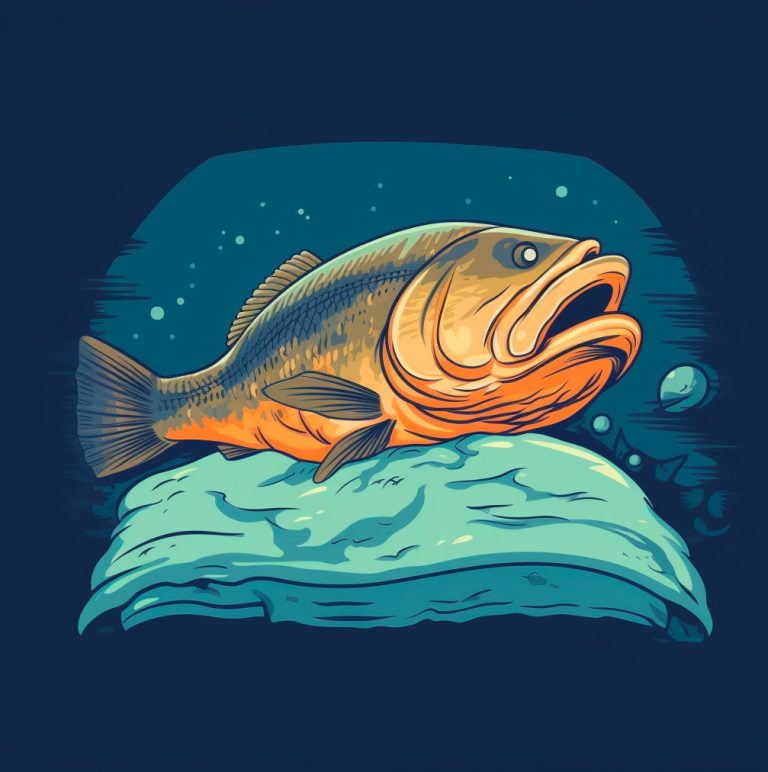
Megabass Dark Sleeper Swimbaits For Bass
Introduction As an avid bass fisherman, I’m constantly on the lookout for new gear and tools to improve my chances of catching bigger and better bass. Recently, I came across the Megabass Dark Sleeper Swimbaits, and my curiosity was piqued. What makes these swimbaits so special? Do they really live up to their reputation among […]
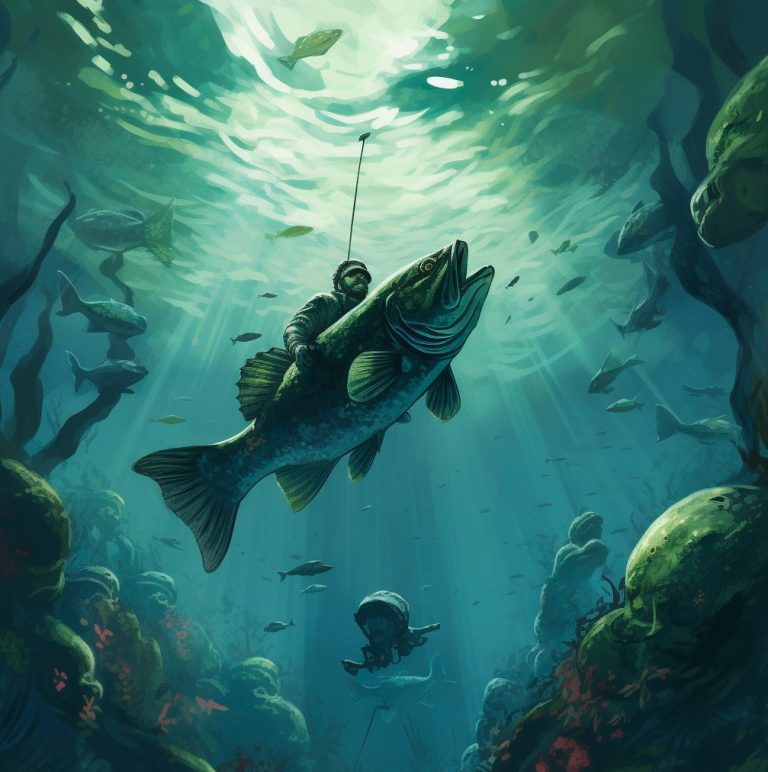
Swim Jigs For Bass: A Comprehensive Guide
Introduction As a bass angler, I’ve always been intrigued by swim jigs. They’re one of the most talked-about and effective lures in the sport, but there’s something about them that always left me perplexed. What is it about swim jigs that make them so effective? How do you choose the right one for each situation? […]
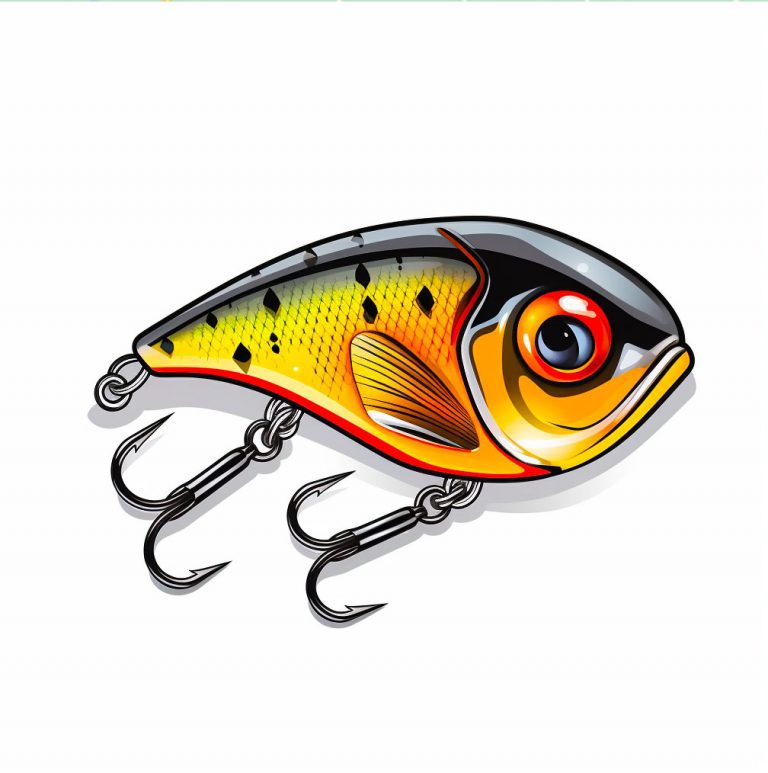
Guide To Catching Bass With Rapala DT Crankbaits
Introduction Bass fishing is one of my absolute favorite hobbies. There’s something about the thrill of the chase, the excitement of reeling in a big catch, that just can’t be matched. Over time, I’ve tried out a variety of different lures and techniques to reel in those big bass, but I have to say that […]
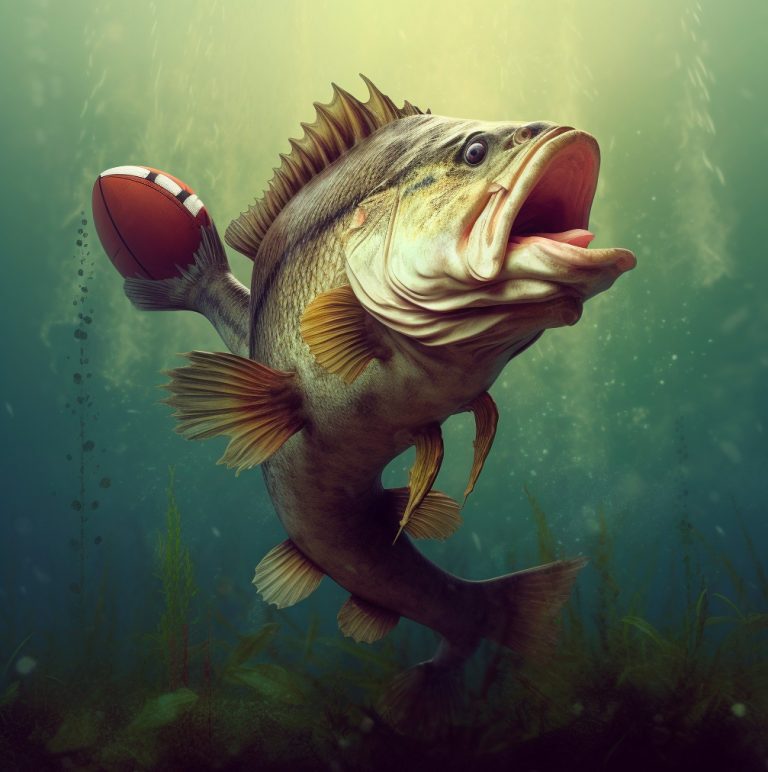
A Guide To Catching Bass On Football Jigs In Every Season
Introduction: Football jigs are a versatile and effective fishing lure that can be used to catch bass all year round. However, different seasons require different approaches when it comes to fishing, and the same is true for football jigs. As an avid angler, I have spent countless hours fishing for bass using football jigs, and […]
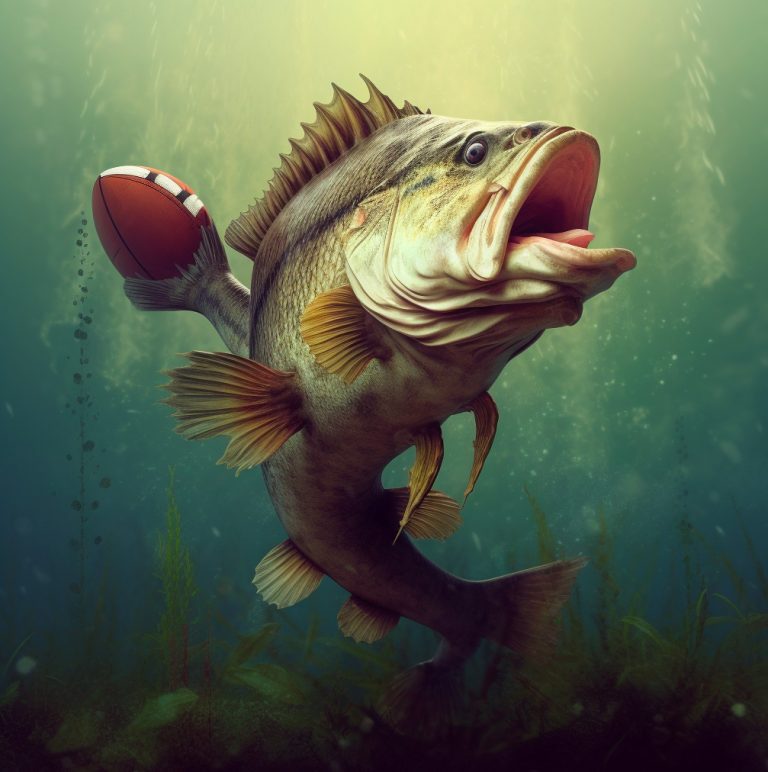
Best Rod, Reel and Line For Football Jigs
Introduction As I sit here on the shores of my favorite fishing spot, I can’t help but feel perplexed by the amount of gear that fishermen bring with them. Every angler seems to have their own unique setup, from rods to reels to lines. And while I appreciate the variety, it also begs the question […]
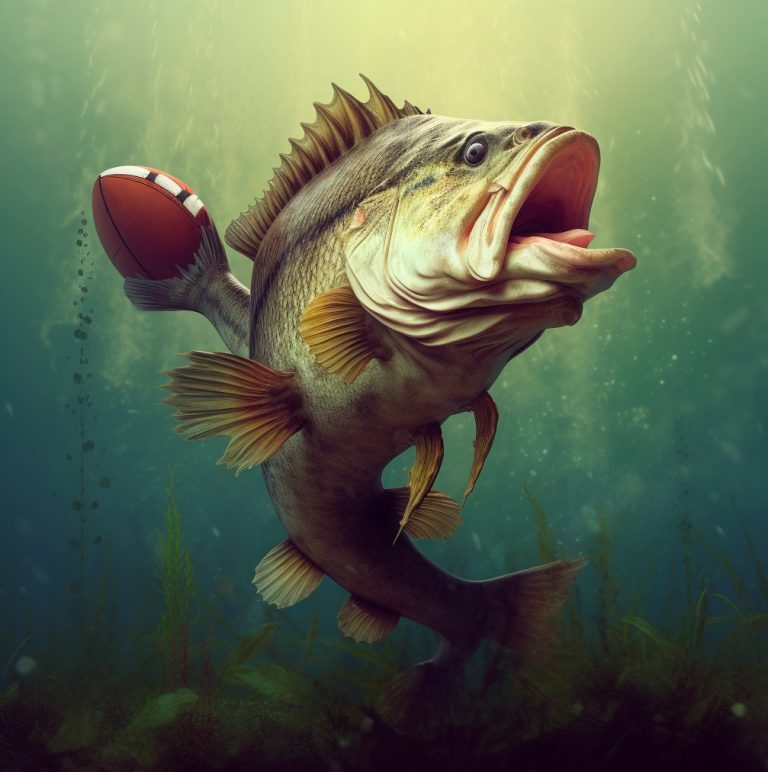
A Guide To Football Jigs For Bass
Introduction As a lifelong angler, I’ve tried my hand at countless types of fishing for different species. But when it comes to fishing for bass, there’s one technique that has stood out above the rest: using football jigs. At first, I was skeptical. The jigs didn’t look like they had much action in the water […]

